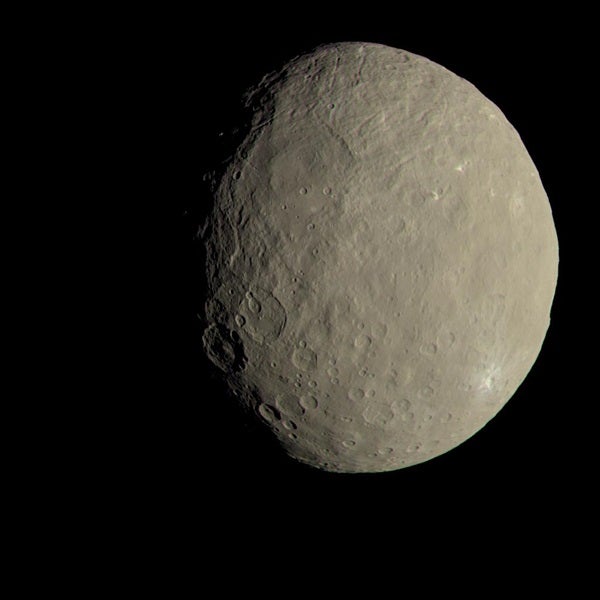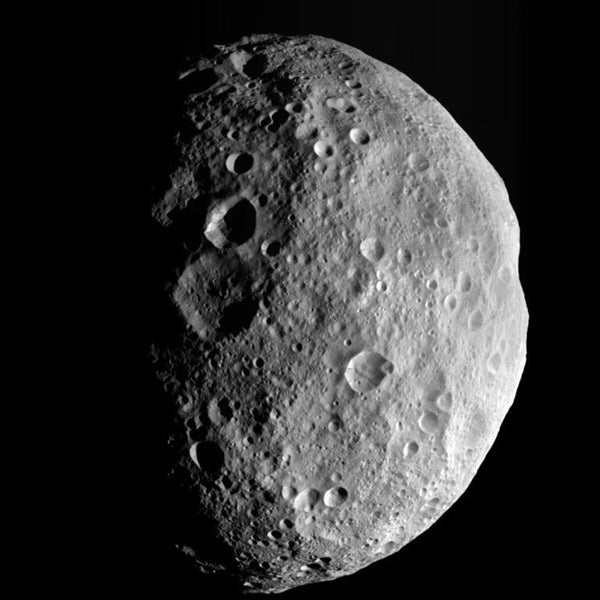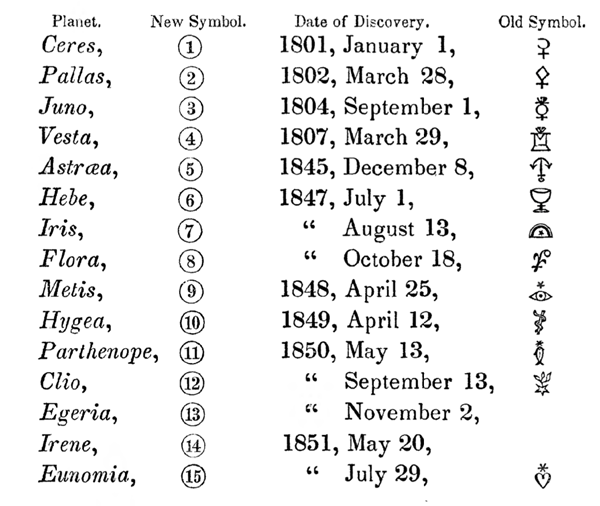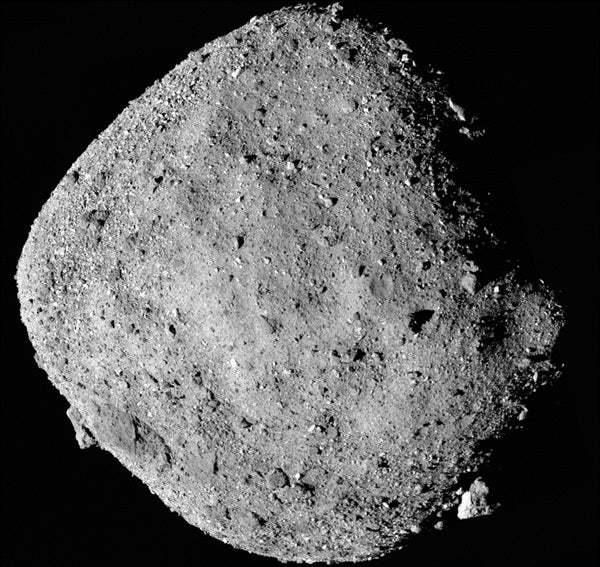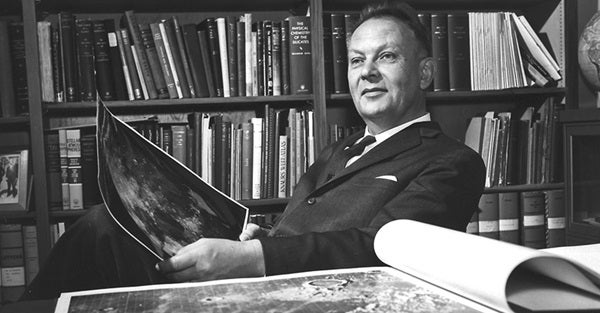It’s been over 16 years since the International Astronomical Union (IAU) changed the definition of a planet to exclude Pluto, igniting a controversy that rages on today. With the icy world struck from planetdom, there are now officially eight planets in our solar system.
But in 1850, astronomers actually counted 20 planets in the solar system. 13 of them were asteroids, newly discovered denizens of the region between Mars and Jupiter. And the number of asteroids — and, therefore, planets — kept rising for decades.
In fact, for more than 150 years, most astronomers routinely referred to asteroids as planets in their published papers.
So, are asteroids a sub-category of planets or their own separate thing? And what happened? When and why did scientists banish asteroids from the ranks of the planets?
Multiple factors
One thing is clear: Asteroids don’t meet the recent redefinition of a planet. The 2006 IAU definition requires planets to be large and spherical, and to “clear the neighborhood around their orbits.” In contrast, most asteroids are lumpy and irregular in shape, and orbit in the asteroid belt with their brethren.
The consensus that asteroids are not planets dates to more than 50 years before the 2006 IAU definition. But pinpointing exactly why astronomers changed their mind is not as obvious as it might seem.
Two explanations have been offered for the change in categorizing asteroids. One can be summarized as deeming asteroids “too small and too many.” This explanation identifies the mid- to late-nineteenth century as the turning point. The impetus, wrote astronomer James Hilton of the U.S. Naval Observatory in 2000, was the realization that these bodies were far too small and numerous to be considered planets. Plus, the job of labeling them in some simple fashion was becoming overwhelming.
A more recent explanation comes from planetary scientists Philip Metzger, Mark Sykes, Alan Stern, and Kirby Runyon in a 2019 paper in Icarus. They spent five years diving into more than a century of research papers and other publications, searching for shifts in the words that astronomers used to describe asteroids, dating back to their discovery. What they found was that scientists had followed the data — but also public perception.
When they all were planets
Giuseppi Piazzi discovered the first known asteroid on January 1, 1801, and named it Ceres. A year later a second object was discovered — Pallas. By 1807, two more had been found in the same region between Mars and Jupiter and named Juno and Vesta.
At the time, as Hilton writes, all were described as a new type of planet. Supporting this label was the fact that they were located between Mars and Jupiter, where the so-called Titius-Bode Law predicted there should be a planet. They also fit into the prevailing theory that the solar system formed out of a cloud of gas and dust, put forward by Immanuel Kant and Pierre-Simon Laplace.
However, William Herschel, the discoverer of Uranus, did not agree with this classification. He noted that the objects were quite small and starlike in appearance, and their orbits were also tilted out of the ecliptic. “I shall … call them Asteroids,” wrote Herschel, “reserving for myself, however, the liberty of changing that name, if another, more expressive of their nature should occur.”
Astronomers did start using “asteroid” as a generic term for the objects. But despite Herschel’s misgivings, they were still considered planets. An introductory textbook from 1828 listed eleven planets, including Ceres, Pallas, Juno and Vesta. By the end of 1850 astronomers had found a total of 13 new objects that they categorized as planets.
Another term used to describe asteroids was “minor planet,” which appeared as early as 1841. But that did not imply they were not planets. For instance, 1861, the Astronomische Nachrichten indexed articles about asteroids under “Minor Planet,” a subcategory of “Planet.” In their 2019 Icarus paper, Metzger and his co-authors noted that “scientists freely admitted hundreds of planets into the planet [category] and expected there would be thousands.”
Even natural satellites — that is, moons — were called planets. Galileo had called the four moons he discovered in 1610 circling Jupiter “planets.” When Huygens discovered Saturn’s moon Titan in 1655, he did the same. This practice continued for more than a century. Asteroids were one subclass of planets, and natural satellites another.
Numbers or symbols?
As the number of discovered asteroids increased, keeping track of them in some effective way became a serious problem. At first, astronomers used special symbols modeled on the ones for the classical planets. These had been used since at least the times of the ancient Greeks in astrological tables. Astronomers had co-opted them as a sort of shorthand for the planets’ names in their writings and publications.
In 1851 the German astronomer Johann Encke proposed a solution. His system would replace the fanciful symbols with circled numbers. Asteroids would be sequentially numbered in increasing order of their semi-major axis. Encke’s system started with Astraea as “5” while Ceres, Pallas, Juno, and Vesta continued to be noted by their symbols.
American astronomer Benjamin Gould, founder and editor of the Astronomical Journal, proposed a modified version “consisting of a circle containing the number of the asteroid in the chronological order of its discovery.” Encke adopted this suggestion, and in 1864 finally numbered Ceres through Vesta in their order of discovery.
The new listing scheme was widely accepted, and James Hilton has identified the 1850s to the 1860s as when astronomers began recognizing asteroids as a separate class of objects. The adoption of the numbering system based on date of discovery and the increasing use of the term “minor planet” were the key “tipping points,” Hilton wrote in 2000. “Once their numbers grew too large to fit the existing scheme of classification their uniqueness was quickly recognized, and a new class of solar system objects was created.”
However, the scientific literature of the time suggests that despite the new classification scheme, astronomers still saw minor planets as planets. In Benjamin Gould’s original proposal, he wrote, “This remarkable group [now] are distinguished from the larger planets in the character of their notation.” Metzger and his colleagues found numerous examples of research papers published from 1858 through 1941 where astronomers referred to asteroids as “planets” (the only other category being “comets”); “small planets”; or a third type of planet called “minor planets or asteroids.”
When the change came…
The shift from “planet” to “not-planet” actually began much later. And it happened in two steps, Metzger said to Astronomy in an interview. First, “in the 1920s scientists stopped calling moons ‘planets.’” The term “moon” became the common description. This was not a decision based on science, says Metzger. Instead, in what he calls “a strange turn of events,” it was a reaction to the general public, which over the preceding decades had settled on “moon” because it was simpler and less confusing. “There’s no discussion of this [change] anywhere,” he added. “They just slowly dropped” that categorization for natural satellites. “That only lasted for about 40 years. Then, planetary scientists went back to [calling them] planets again.”
The second step was the publication in the early 1950s of several papers by astronomer Gerard Kuiper. Metzger specifically points to a paper published in 1953. Based on his then-current photometric studies of asteroids, Kuiper suggested, they could well have begun forming through accretion in the early solar system. Collisions would create the myriad of irregularly shaped objects we see today. “The accretion hypothesis fits the empirical data very well,” he wrote, adding, “the original asteroids might indeed have attained the size of Ceres,” the largest body in the classic asteroid belt. But only a very few would have successfully reached the size needed from self-gravitation to pull them into a spherical shape.
Accretion is the accumulation of tiny particles into larger objects by gravitational attraction. As the solar system began forming, accretion created larger and more massive objects. Those that reached diameters of one-tenth to one kilometer we call planetesimals. Slow-motion collisions between them created still-larger bodies. Some eventually became terrestrial planets like Earth and Mars, or the cores of gas giants like Jupiter and Saturn and ice giants like Neptune and Uranus. More violent impacts during the formation period also played an important role, shattering planetesimals into smaller fragments. The eventual result was the myriad of irregularly shaped objects ranging in size from a marble to Mount Rainier to Maryland.
Following the publication of Kuiper’s 1953 paper came what Metzger has called “an abrupt disappearance from the literature of papers that called asteroids planets.” In the decades since the quantity and quality of published geophysical data on asteroids has exploded.
Today, almost no one in the astronomical community considers asteroids to be a sub-class of planet. Nor are they referred to as such in published papers. Asteroids, wrote Metzger and his colleagues, have been recognized as a separate category of object in the solar system “on the basis of new data showing [their] geophysical differences from large, gravitationally rounded planets, along with the theoretical developments that gave an adequate explanation” for those geophysical differences.”
“It takes time for people to give up preconceived ideas,” Metzger says, and “most people are not dealing with taxonomy issues.” It took more than a century and a half, but the actual scientific data about asteroids finally changed how astronomy defines them.
Which, of course, is how science is supposed to work.

